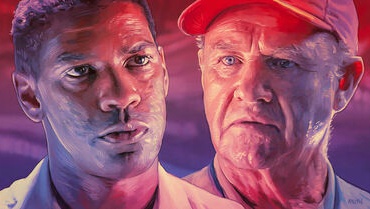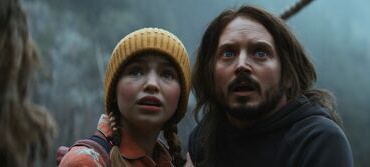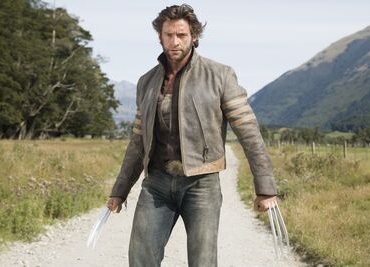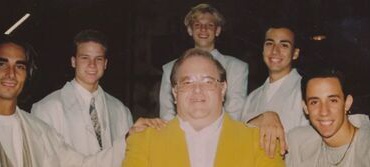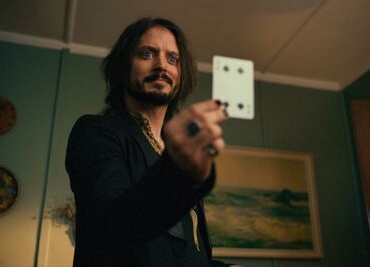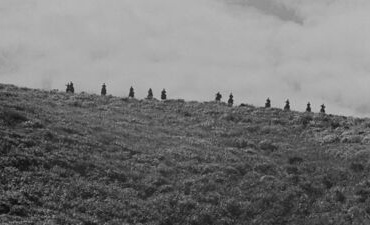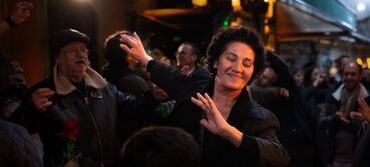
We are pleased to offer an excerpt from the July 2024 issue of the online magazine Bright Wall/Dark Room. Their theme for July 2024 is “To the Sea,” and, in addition to Bryan Miller’s piece about “Crimson Tide” below, includes new essays “Finding Nemo,” “The Life Aquatic with Steve Zissou,” “The Lighthouse,” “The Navigator,” “My Love Awaits Me by the Sea,” “The Beaches of Agnes,” “Malni,” “When Marnie Was There,” and more.
You can read our previous excerpts from the magazine by clicking here. To subscribe to Bright Wall/Dark Room, or look at their most recent essays, click here.
The sea makes its own law.
There is a technical term for justice out among the waves—“maritime law”—but that’s just a wishful attempt to extend landlubber rules beyond the reach of the shore. The reality is, once a group of sailors ventures into open water, the vastness of the expanse around them creates a society in miniature—not a ship in a bottle, but a whole bottle city where law and order is revealed to be a fragile working agreement among the captain and crew. One man’s mutiny is another man’s revolution. Of course, it’s that way everywhere else, too. Out on the water, that truth just becomes more apparent.
“At sea a fellow comes out. Salt water is like wine, in that respect,” Herman Melville once wrote in a letter. He would know; Melville himself became a mutineer in 1842, aboard the Lucy Ann.
Movies have been hip to this truth for nearly as long as cinema has existed. Among the earliest notable examples of mutiny dramas include Sergei Eisenstein’s 1925 silent classic The Battleship Potemkin and Frank Lloyd’s Mutiny On the Bounty, the latter of which became the highest-grossing American film of 1935. And that’s not even the earliest cinematic depiction of the infamous 1789 revolt aboard the HMS Bounty; that would be a silent 1916 Australian-New Zealand co-production, now considered lost, followed by a 1933 Australian version (In the Wake of the Bounty) starring a then-unknown Errol Flynn. The story would be prominently remade twice more, once in a dubious 1962 iteration (also entitled Mutiny on the Bounty) starring Marlon Brando as the malevolent Captain Bligh, and again in a handsome 1984 Roger Donaldson production (simply titled The Bounty) featuring a young Mel Gibson.
The apotheosis of mutiny movies also happens to be the rip-roaring coolest of the bunch, a piece of pure pop entertainment that—much like its director, Tony Scott—is due for reconsideration. Crimson Tide is a guiltless pleasure, a perfect Sunday afternoon cable rewatch. It’s more than that, but let’s not sail too quickly past the virtues of its shiny surface.
The central conflict is a battle of wills and worldviews fought between two men. In one corner is Ramsey (Gene Hackman), captain of the USS Alabama, an old war dog of a submariner who brags about the simplicity of his approach and his fidelity to the chain of command. His opposite, the executive officer Hunter (Denzel Washington), is a Harvard-educated man whose nuanced views about war in the nuclear age are greeted with skepticism around the officers’ table. This primal confrontation is endlessly reflected and refracted by their respective subordinates aboard the ship until the answers are anything but clear.
Ramsey and Hunter’s conflicting philosophies are put to the ultimate test under the direst possible circumstances. They’re already on high alert thanks to a Russian separatist group that has taken control of a nuclear missile battery. The Alabama is ordered to fire its nukes to stop the seemingly imminent attack. But this already-dire situation is further complicated by a second, partial message that is truncated when the sub’s communication lines are severed, a message that may—or may not—rescind the order to fire. When Ramsey refuses to wait to launch the Alabama’s payload, Hunter seizes control of the ship by reciting Navy code like Shakespearean verse. It’s the first of many instances in which the movie asks the audience to ponder the convoluted nexus of legality, morality, and ethics.
Over the course of their duel, each man’s most loyal friend winds up turning against him. And in the case of both Ramsey’s sidekick Cob (George Dzundza) and Hunter’s old shipmate Weps (Viggo Mortenson), their dissent is a begrudging choice that hinges on their own interpretation of the proper procedure. The question is never whether to follow the law, but rather what following the law means—and who gets to interpret it.
*
Scott and his crew are clearly aware of all the submarine-movie tropes. They are, so to speak, swimming in them. Early in the movie, Mortenson’s Weps passes the time by challenging another sailor, played by James Gandolfini, to a trivia game about the stars of classic submarine flicks. Quentin Tarantino did an uncredited rewrite on the script, and this is among the handful of scenes that obviously bears his fingerprints. It’s a classically Tarantino-esque nod to show that everyone involved is well aware of the mechanics of this sub-genre, including us, the audience—plus bonus points for anyone who knew Curd Jurgens played the villain in The Enemy Below.
And the film deploys many of these tropes: the tense silence of the crew as enemy ships pass whisper-close to one another, the bubbling wakes of torpedos slicing through the water, the concussion-rattle of nearby explosions, and the subsequent struggle to seal off flooding hulls. Despite these trappings, though, Crimson Tide less resembles underwater thrillers like Run Silent, Run Deep or procedure-steeped tragedies like Das Boot than it does the more philosophical mutiny dramas, like the many iterations of the tale of the HMS Bounty or, in particular, The Caine Mutiny, which is perhaps Crimson Tide’s most apropos counterpart.
The Caine Mutiny (1954) stars a late-period Humphrey Bogart as Captain Queeg, a battleship captain driven mad by paranoia, insecurity, and PTSD in the waning days of World War II. Queeg’s erratic, often capricious actions culminate in a breakdown during a storm at sea that causes a cabal of his crewmen to commandeer the vessel, which becomes the basis of a court martial trial that comprises the third act. During the trial, a Navy lawyer named Barney Greenwald (José Ferrer) reluctantly defends the uprising, publicly exonerating the sailors but privately castigating them for their reckless actions. “You’re either a fool or a mutineer,” he insists. “There is no third option.”
Crimson Tide shares that weary skepticism and is, in some surprising ways, perhaps the subtler movie, despite its blockbuster sheen and breathless hyperbole (the fate of the entire world hangs in the balance!). The Caine Mutiny makes a final-act push to garner some sympathy for the devilish captain, but Queeg is quite obviously deranged from the outset. Through stubbornness and cowardice, his actions repeatedly imperil the lives of his men and the crews of other ships for reasons almost entirely related to his own vanity.
That’s not the case with Crimson Tide’s Ramsey. Hawkish as he may be, Ramsey isn’t chasing glory. He’s doing what he believes to be his duty when the stakes are the highest. The same goes for Hunter, and all the conflicted men under their command. Of course, the movie must ultimately provide an answer to its Schrödinger’s cat quandary, and Hunter turns out to be correct. Ramsey eventually tilts into outright villainy when he holds a sailor hostage shortly before giving a speech to Hunter that brings the movie’s racial subtext way above periscope depth. (Speaking of scenes that sound like they were written by Tarantino…) But whereas Queeg’s behavior is deranged almost immediately, Crimson Tide makes space for the possibility that Ramsey may, unfortunately, be correct, and that Hunter’s moral principles could lead to practical disaster. That sentiment is reflected in Washington’s performance; he plays Hunter as a reluctant crusader forced to take decisive action, but in the final moments before the fateful message can be decoded, his expression is darkened with uncertainty.
Heady stuff for a movie generally more associated with Michael Bay action extravaganzas than an Oscar-nominated film based on a Pulitzer Prize-winning novel like The Caine Mutiny. If Crimson Tide is overlooked as a true-blue war movie classic, it’s likely because of the very stylistic flourishes that make its moral philosophizing go down so smoothly.
That’s the story of director Tony Scott’s too-short life. For too long, Scott was siloed with his fellow, often less-distinguished directors working in the Simpson/Bruckheimer blockbuster factory. Scott was regarded as a cinematic confectioner at best, and one of the horsemen of the attention-span apocalypse at worst. I was recently reading an old Film Comment interview with Tarantino where he brings up Scott’s quick-cut style, only to have journalist Gavin Smith dismiss Scott’s approach in three syllables: “Can’t stand that.”
In the wide angle of hindsight, Scott was a harbinger of inevitable change whose artistic eccentricities now look like visions of the future. When Crimson Tide was released in 1995, conflating a filmmaking approach to “MTV style” was a sick burn bordering on a slur. Almost 30 years later, the MTV aesthetic is a nostalgic touchstone. And over the course of those three decades, the broader culture caught up to Scott’s hyperkinetic pace, with the advent of social media and the Vine-ification of six-second mini-movies. Slandering Scott as an ADHD filmmaker isn’t just a neurotypical faux pas in 2024, it’s as quaintly retrograde as scolds of yore criticizing Martin Scorsese for using too much rock music in his soundtracks. Repent, harlequin, said the TikToker!
With fresh eyes we can see that Scott’s style is frenetic but also masterfully controlled, and Crimson Tide shows off that confidence as well as any movie in his filmography. Scott restrains himself in the movie’s prologue, sticking to longer takes and wider shots. He starts zooming the cameras around once the men are confined to the sub, lending incredible dynamism to what are often static scenes playing out in close quarters. The angles go all dutch, and Scott is increasingly garish in his painting of the characters in the multi-colored lights of the submarine’s glowing instruments. Yet whenever the characters begin to debate morality/authority, the frame straightens out so as not to tilt in either direction.
*
In the three decades since the movie’s release, political tides may have shifted, but fear of a hyper-aggressive, nuke-touting Russia is little diminished. Scott’s thrilling stylistic flourishes may seem a tad less audacious, although not significantly so. Yet in so many ways, the film’s concerns about the fragile nature of the social order and the tacit agreement that keeps systems and institutions functioning are actually more relevant than ever.
Let’s not drift too far into the choppy surf of politics. But it’s damned hard to watch Crimson Tide today as an American and not think of it in the context of Capitol-storming, election-denying, and the delegitimization of the justice system. Whichever way you may personally lean, port or starboard, you may have found yourself pondering the overthrow of The Guy In Charge at some point or another in the past eight years. You might have pined for it. You may yet find yourself on the other side of that debate again soon.
Crimson Tide isn’t a Conservative movie, which makes it fairly rare among war films, nor is it an anti-institutionalist polemic. The moral imperative of rejecting unchecked authority is the animating idea of the whole story, yet the film remains consistently skeptical of characters who are too eager to seize control. Crimson Tide doesn’t argue that the inevitable unintended consequences are reason enough to outright preclude drastic action; rather, it implies that they should give pause to even the most righteous warrior. The film’s ultimate warning is that even a proper mutiny is still a mutiny.
At one point Ramsey tells Hunter, “We’re here to preserve democracy, not to practice it.” There’s a bit of cognitive dissonance in this statement, but not more so than in the notion that one must seize authority to prevent authoritarianism. A ship in the midst of the ocean is in many ways a kind of laboratory of lawmaking—that’s what makes these films so fascinating—but, sooner or later, what happens at sea is bound to wash ashore.
Art credit: Tom Ralston.


